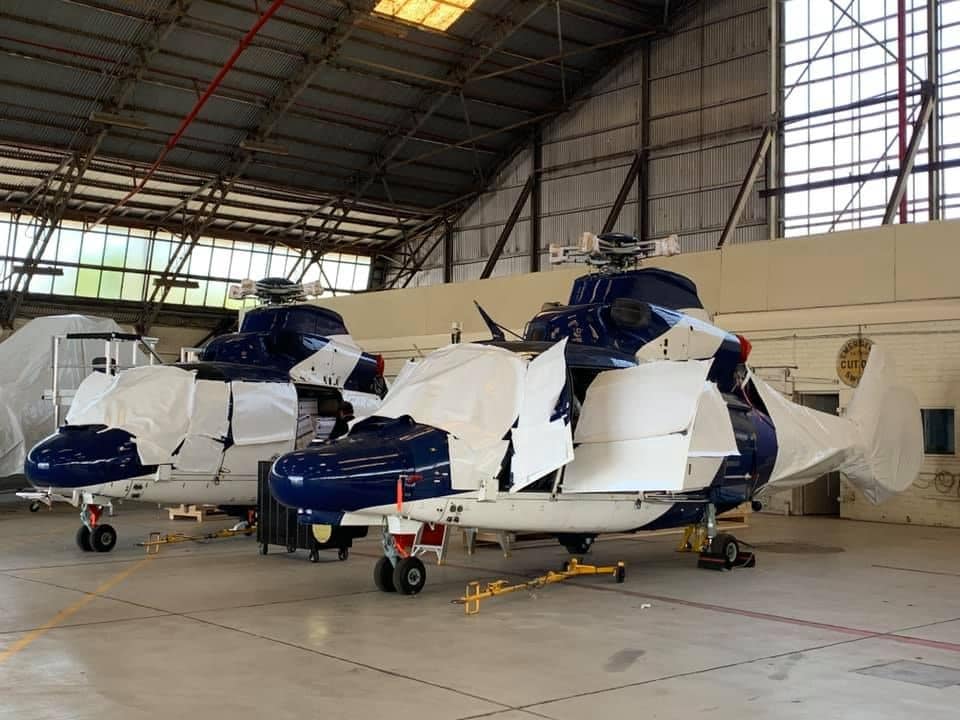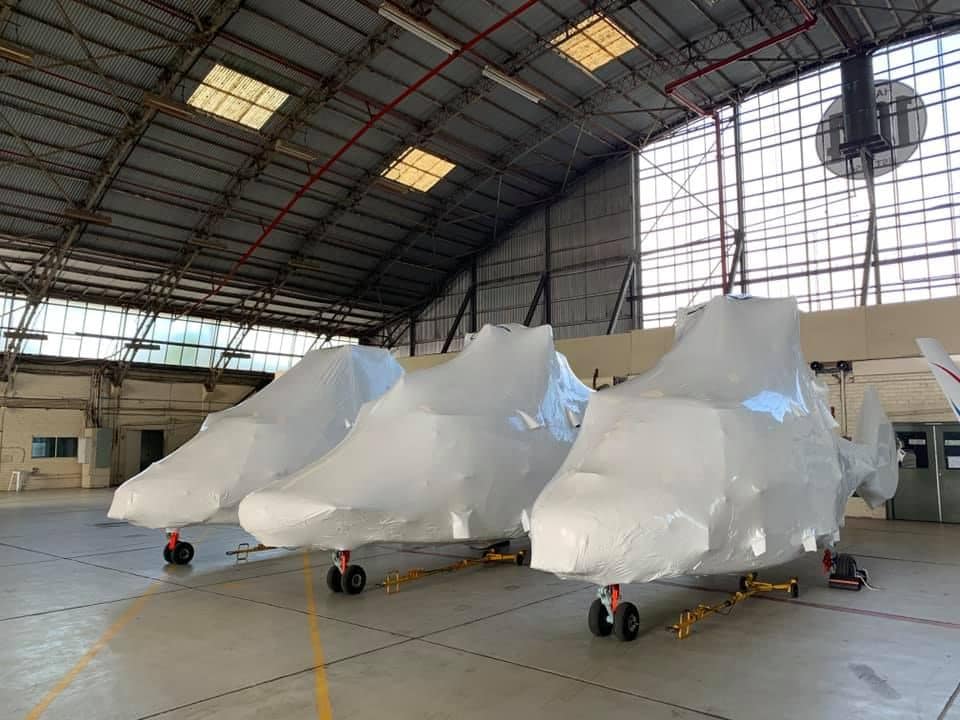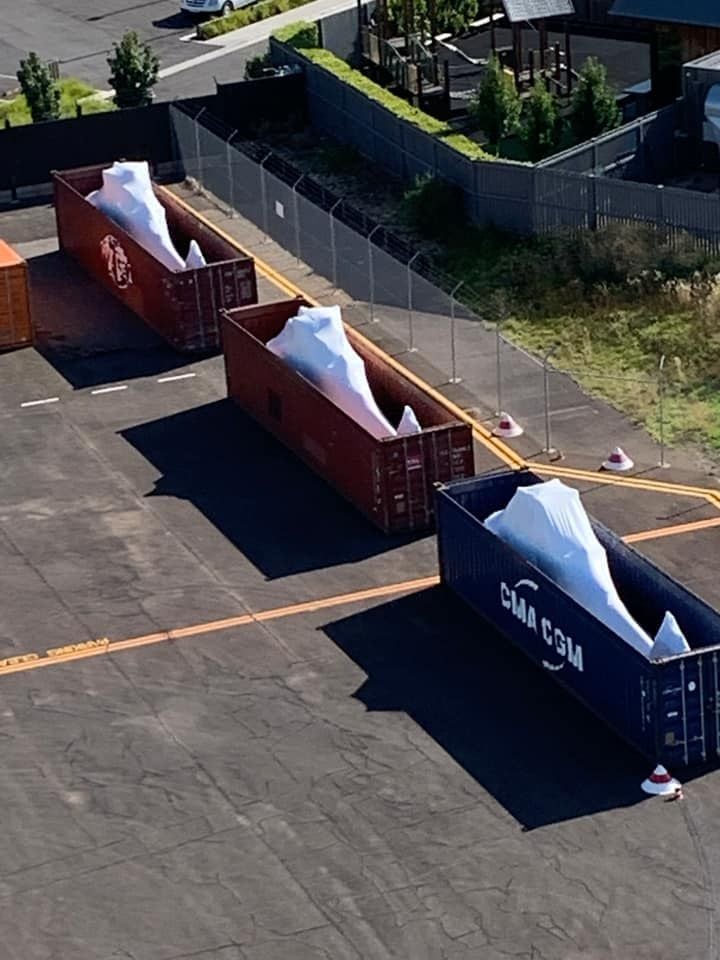AS365
Join Date: Jun 2006
Location: Perth, Australia
Posts: 94
Likes: 0
Received 0 Likes
on
0 Posts
MZ,
Eurocopter make mounts that go on the sides of the 365 just behind the pilots and co-pilots doors. To these you attach your gadgets. There are also a lot of other mounting systems out there that aren't EC. Google photos of as365 for a lot of different views.
Eurocopter make mounts that go on the sides of the 365 just behind the pilots and co-pilots doors. To these you attach your gadgets. There are also a lot of other mounting systems out there that aren't EC. Google photos of as365 for a lot of different views.

Back in the mid eighties the aircraft was called a SA365N.....
Or am I wrong?
The constant referral to AS365N really pisses me orrrfff.
OK.... Too much time on my hands...
Or am I wrong?

The constant referral to AS365N really pisses me orrrfff.

OK.... Too much time on my hands...

Yes Griffothefog, it's a bit confusing indeed...."SA" is from "Sud Aviation" wich became "Aťrospatiale" in the late 70's and "SA" turned into a "AS"
The SA365 is an upgraded twin engine version of the single engine SA 360 dating from eary 70's.
When in 1978 "Sud-Aviation" became "Aťrospatiale" developments of the SA 365 were called AS365.....
Since 92, it's "EC" (Eurocopter)
The SA365 is an upgraded twin engine version of the single engine SA 360 dating from eary 70's.
When in 1978 "Sud-Aviation" became "Aťrospatiale" developments of the SA 365 were called AS365.....
Since 92, it's "EC" (Eurocopter)
I don't know for sure but I doubt it. The ones I flew only had 3-axis AP but would fly a coupled ILS down to either 60' or 80' agl and then reduce speed along the runway until the IAS hold dropped out.
Join Date: Oct 2004
Location: HLS map - http://goo.gl/maps/3ymt
Posts: 439
Likes: 0
Received 1 Like
on
1 Post
Nothing that exciting - a colleague is performing T-PED testing and the allowable tolerances change depending on the certification level. The TCDS and RFM donít explicitly mention a limit on CAT I approaches, or a minimum allowable DH, so one may be able to argue they are not limited to CAT I. Having never flown with an SPA.LVO approval it is not my area...
You are limited to Cat 1 DH of 200' regardless - that is the limit of CAT1 ILS procedure, its not an RFM limit.
Join Date: Oct 2004
Location: HLS map - http://goo.gl/maps/3ymt
Posts: 439
Likes: 0
Received 1 Like
on
1 Post
Originally Posted by [email protected]
You are limited to Cat 1 DH of 200' regardless - that is the limit of CAT1 ILS procedure, its not an RFM limit.
Only if the aircraft is limited to CAT I. Where does it say it is?
You can only fly Cat II ILS at airports with the appropriate ground lighting and equipment.
Many helicopters are physically capable of flying lower than Cat I limits - it depends on the AP fit but to legally fly Cat II I think you would have to jump through a number of regulatory hoops.
I get the impression you want to fly CAT II ILS using an i-pad or similar, is that the case?
Join Date: Oct 2004
Location: HLS map - http://goo.gl/maps/3ymt
Posts: 439
Likes: 0
Received 1 Like
on
1 Post
Originally Posted by [email protected]
what I mean is that when you fly a Cat 1 ILS, your minima can never be less than 200' - it is a procedure limitation not an aircraft one.
You can only fly Cat II ILS at airports with the appropriate ground lighting and equipment.
Many helicopters are physically capable of flying lower than Cat I limits - it depends on the AP fit but to legally fly Cat II I think you would have to jump through a number of regulatory hoops.
I get the impression you want to fly CAT II ILS using an i-pad or similar, is that the case?
You can only fly Cat II ILS at airports with the appropriate ground lighting and equipment.
Many helicopters are physically capable of flying lower than Cat I limits - it depends on the AP fit but to legally fly Cat II I think you would have to jump through a number of regulatory hoops.
I get the impression you want to fly CAT II ILS using an i-pad or similar, is that the case?
The regulatory hoops you refer to are a special approval for low visibility operations (SPA.LVO). My question is ĎIs the 365N3 certified for CAT II ILS operations?í I.e. with the regulatory approvals in place. Or, is it limited to CAT I, meaning you would never be granted the approval.
The AW169 RFM, for example, states ďThe helicopter is certified to carry out CAT I ILS approaches up to 4 degs glideslopeĒ. I would argue therefore it is has not yet been certified to conduct CAT II ILS operations and you would probably not be granted the approval, but I havenít found such a Ďlimitationí on the AS365. Thatís not to say it would necessarily meet the requirements to gain approval...
AMC4 SPA.LVO.100 states The DH for CAT II and OTS CAT II operation should not be lower than the highest of:
(i) the minimum DH specified in the AFM, if stated;
(ii) the minimum height to which the precision approach aid can be used without the specified visual reference;
(iii) the applicable OCH for the category of aeroplane;
(iv) the DH to which the flight crew is qualified to operate; or
(v) 100 ft....
... prompting my question on whether there is a minimum DH specified for the AS365. It has nothing to do with the prescribed CAT I minima of 200ft.
AMC2.SPA.LVO - LVO approval doesnít specify anything which would automatically rule out the AS365N3 from gaining approval.
Given the number of people who have flown offshore and SAR with the 365N3 my questions didnít intend to get overly technical, other than to understand whether anyone had ever gained approval to fly to less than CAT I minima.
(Reference to T-PED testing is because the allowable interference with nav kit is stricter if conducting CAT II/III operations).
... prompting my question on whether there is a minimum DH specified for the AS365. It has nothing to do with the prescribed CAT I minima of 200ft.
I can't see how Airbus would put a limit in the RFM that was higher than they had equipped the aircraft for and the 4-axis AP with SAR modes can take you to the hover IMC.
I think it will just be regulatory permissions you require as long as you have a rad alt and twin ILS receivers.
The quote from the 169 RFM is a red herring - the limitation is all about the steepness of the approach due to the increase in RoD and its effects on stability and the pressure instruments accuracy - it may also factor in OEI go around capability. That is why it specifies a maximum glideslope angle which is not unusual but 4 degrees is quite a low limit - I'm sure you know that 3 degrees is the norm.







